Paper artist Kate Kato on her obsession with bugs
Outnumbered: Entomology Studies © Kate Kato
Recording her discoveries of the natural world, artist and maker Kate Kato creates intricate life-sized sculptures of insects and plants using reclaimed materials
Glance at a collection of Kate Kato’s work and you’d be forgiven for thinking that the 3D insect sculptures she creates from recycled and reclaimed materials were real specimens. Look again and it’s then that you notice a stitch of embroidery, a word on a recycled scrap of paper or a flash of wire, and realise that every beetle, butterfly, bug and flower has been meticulously shaped, carved and occasionally embroidered to create a natural world in sculpture.
From her studio on the Welsh borders – which she describes as a ‘mini museum’ – we talk to Kate about her curating collections which inspire curiosity and joy.
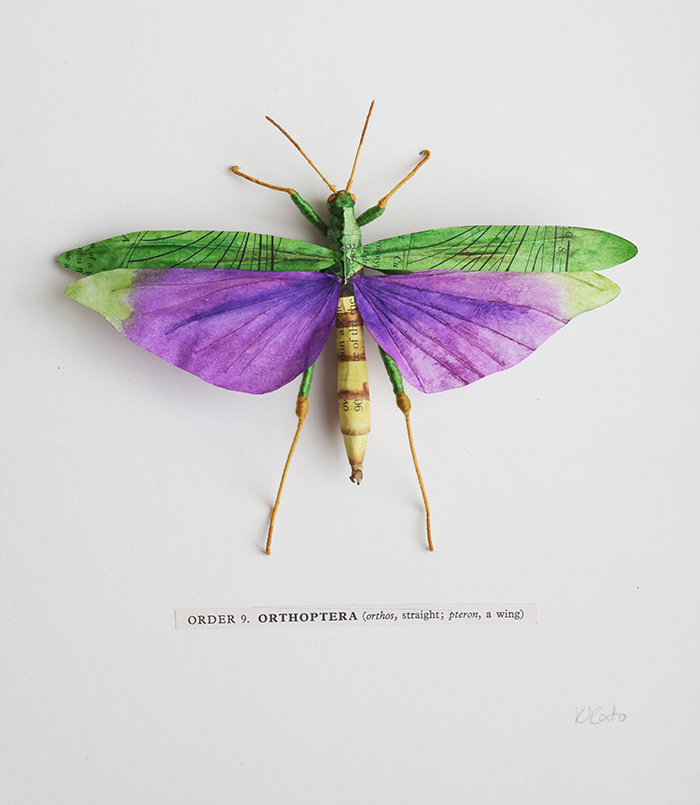
Amazon grasshopper © Kate Kato
What inspired you to create these intricate sculptures?
When I was little my mum used to take me to museums, as apparently it used to keep me quiet. I used to spend a lot of time in the natural history section looking at displays of beetles and butterflies. My family were really into nature and I grew up with a love of collecting things from the outdoors.
I was always artistic and used to be a graphic designer, but when I had my first child seven years ago I stopped working and wanted to start doing something creative. I wanted to make really lovely detailed botanical illustrations, but I can’t draw that well, so I thought why not try to make them 3D, as in my head that made a lot more sense. So I started to make bugs and plants out of paper. Because I’d studied bookbinding, I was used to working with paper and had the tools and knowledge, so it made sense.
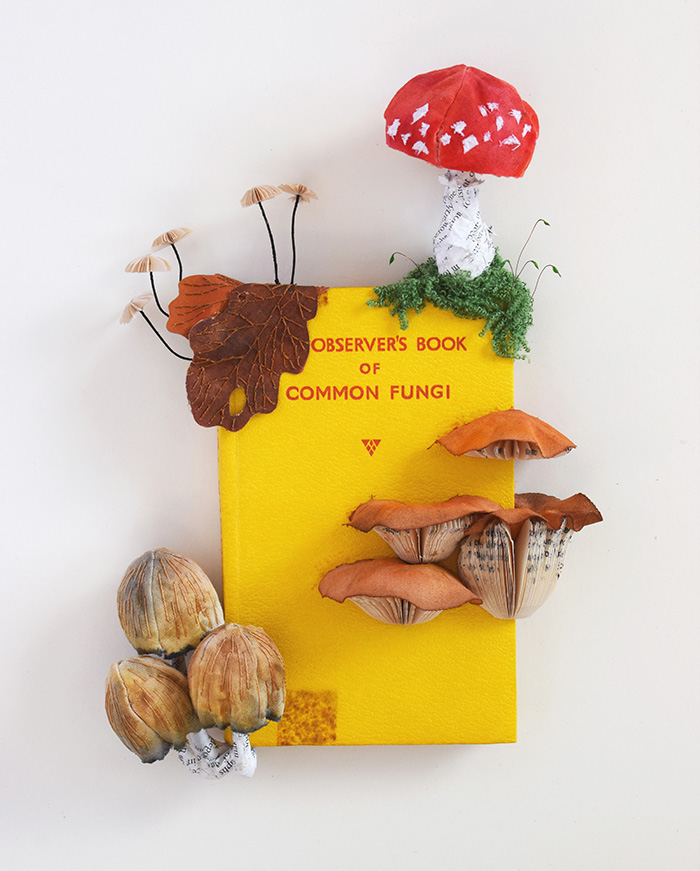
The Observer's Book of Common Fungi © Kate Kato
They’re very realistic. Do you have to study each species?
I read a lot of non-fiction and love to discover new insects and plants. There’s usually a theme that runs through each of my collections, such as wild flowers that grow on the verge near where I live.
I do a lot of research, collect the real specimens and study them, like an illustrator studies something when they’re drawing. For instance, with plants, I’ll take them apart and flatten them out, so I can make templates from them and reconstruct them. If I can’t get hold of the real thing I’ll read a lot about their background and do online research. The research helps me understand how they interact with each other, which is helpful for the dioramas because I need to know how they would look when they were growing in the wild together.
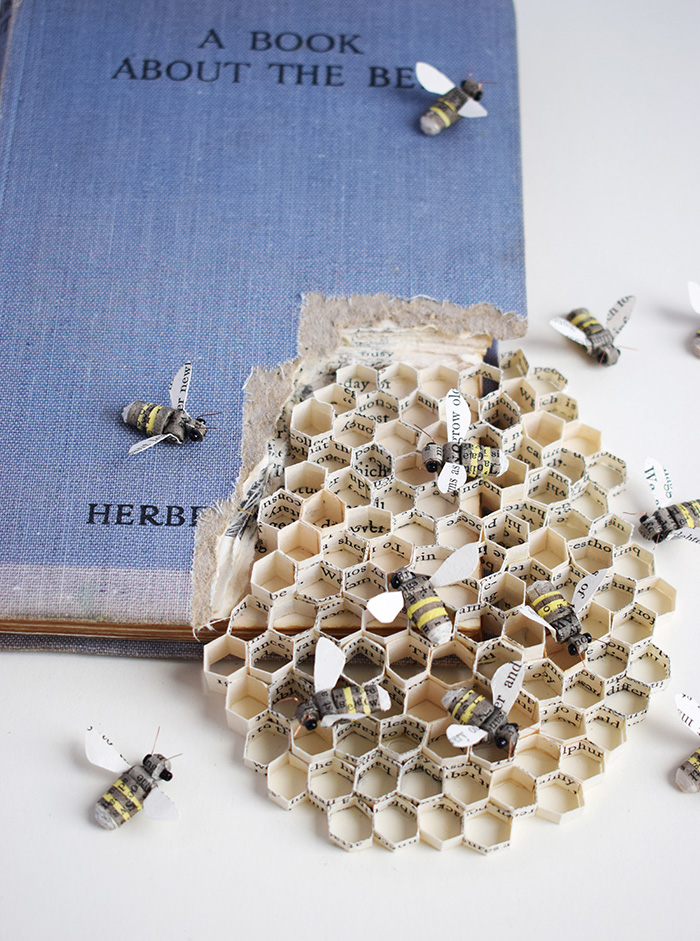
A Book About the Bee © Kate Kato
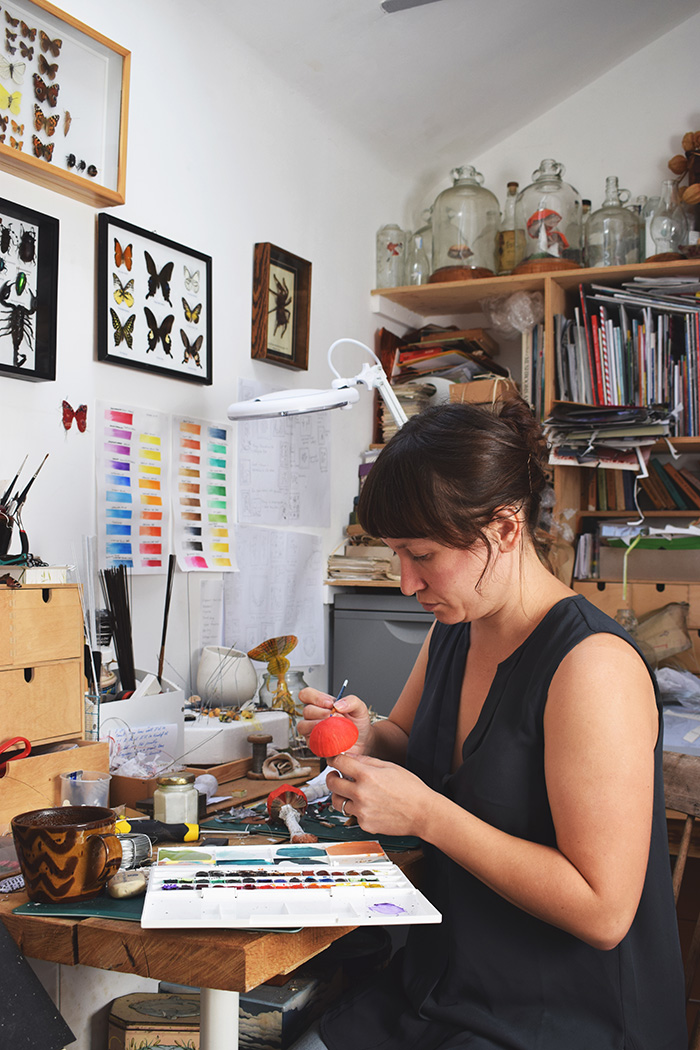
Kate at work in her studio © Kate Kato
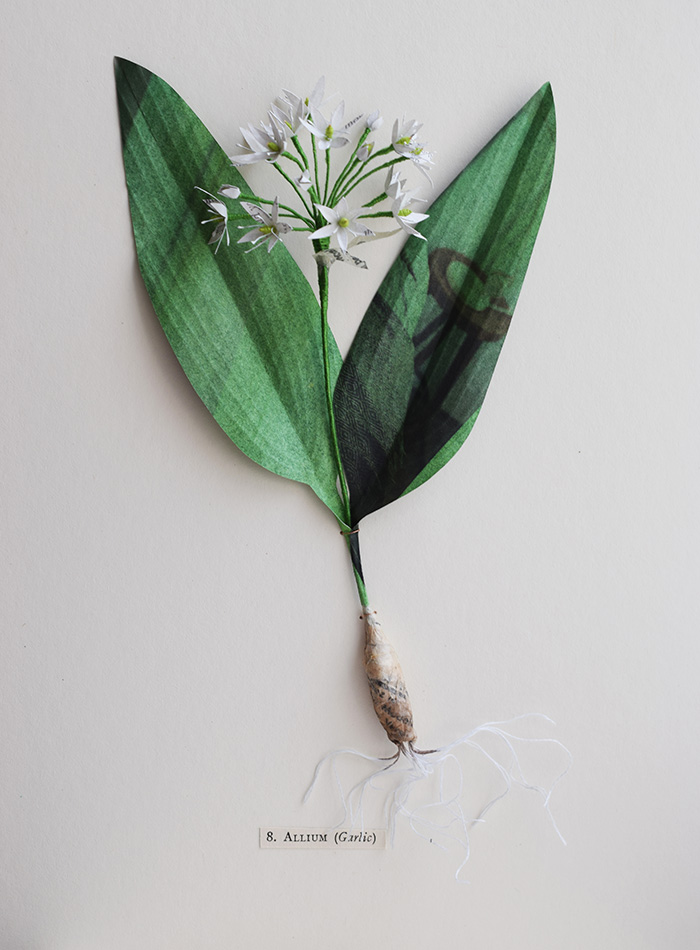
Allium (wild garlic) © Kate Kato

A Book About the Bee © Kate Kato

Kate at work in her studio © Kate Kato

Allium (wild garlic) © Kate Kato
It must be a long process. How long does a butterfly take to make, for example?
I do my research and work out the pattern first. I have a technical sketchbook where I keep my final designs. The research and experimenting takes a few days, then a peacock butterfly, for instance, takes me about two hours to stitch and put together. Generally, I spend a lot of time photographing stuff or bookmarking pages in books, collecting research that isn’t necessarily for anything specific, but knowing that one day I’ll want to revisit it. I also follow scientists and entomologists on X/Twitter and make a note of any new cool discoveries.
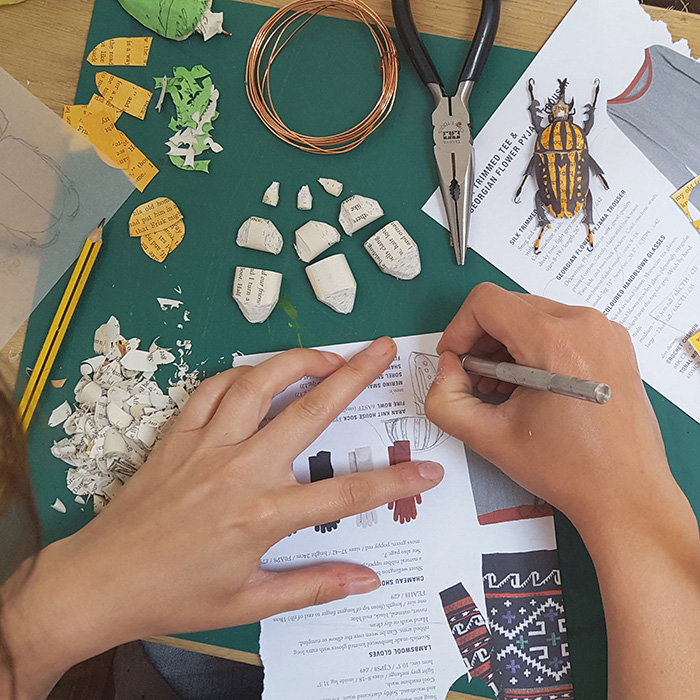
Creating bugs from old catalogues and paper scraps © Kate Kato
Why do you use recycled and reclaimed materials?
I mostly use recycled paper, old wire and thread. People often give me their junk – which is good and bad – but I particularly like old magazines and catalogues. I like the pictures where the colours blur in the background because they make really good insect shells, giving them texture and depth. I also use damaged books, old letters and old maps. Where I can, I buy second-hand, or recycle bits of old things – like pulling the threads from an old embroidery, for instance. Wire I get from electricians who give me pieces they’ve pulled out of the walls that they would otherwise chuck away. Occasionally I use old fabric – recently I took pieces from an old pillowcase for some of the moth bodies and caterpillars I’ve been making.
I don’t feel I need to buy new materials when there are old and broken things that are perfectly usable. And it adds an extra story to my sculptures. I deliberately leave bits in so you can see they’re made from used materials; that’s one of the things people find interesting and encourages them to look even closer. It’s then that they start asking questions about the materials and about the real bugs. Hopefully they end up learning something new about nature.

Blue morpho © Kate Kato
Tell us about your commission from Sotheby’s
They commissioned me to do a window display full of butterflies for their fine jewellery store, Sotheby’s Diamonds in Mayfair. We were renovating our house at the time and living with my mother-in-law, but I thought ‘I have to do this job!’ so I was up quite late on a number of evenings, stitching butterflies and attaching them to wire to create the display.
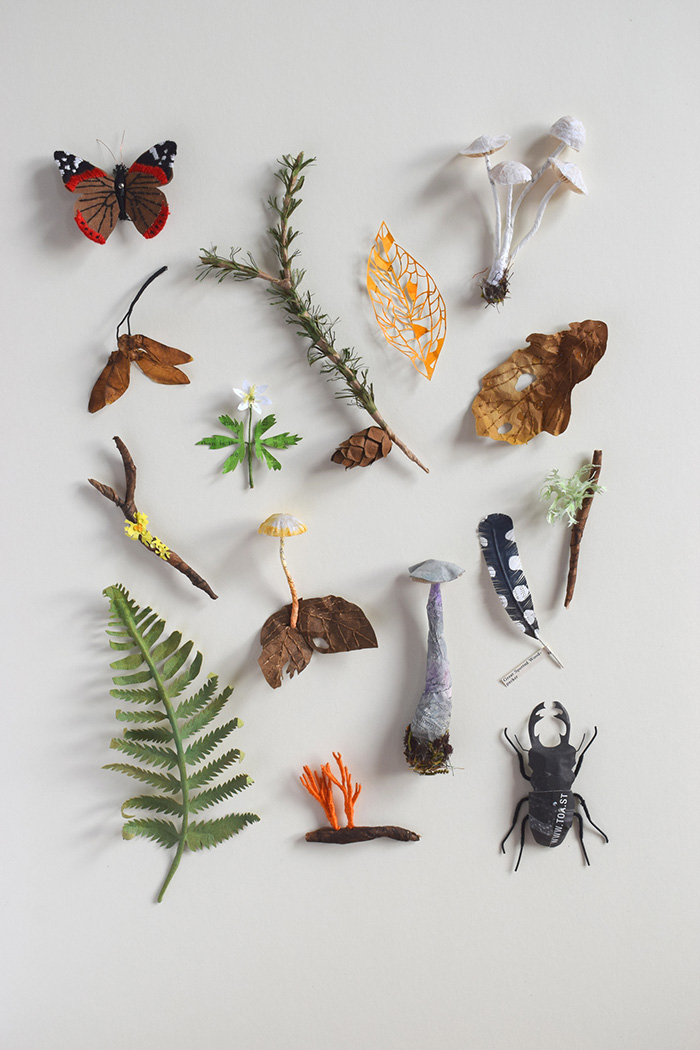
Woodland Studies © Kate Kato
What do you love about being an artist and maker?
I’ve always loved the learning aspect of it. I’m passionate about curiosity, and provoking it in others. That’s what I really love. People often turn into big kids when they see my work and I love that we can have excited conversations about bugs – finally there’s a purpose for my crazy obsession! My work is also great because I can do it during school hours. Most of the time I’m working in the studio but I enjoy going out and exploring too. I take our dog, Bill, on lots of walks and class it as research!
Part of what I want to achieve through it is to educate people and make them more aware of nature. A lot of people are scared of bugs, but they look at my work and then start asking questions. The more something is in front of you, the more you begin to understand it, and I hope my work leads people to pay more attention to nature.
WORDS: AMY BRATLEY
Before you go...
...fancy automatic entry to all future competitions?
Simply register online today for FREE and you will get:
Automatic entry to all current and future competitions.
Access to Reclaim Inspiration - an online visual pinboard for saving all your home and style inspiration.
A regular newsletter of inspiration, ideas and advice.

Save all your articles in one place
Become a Reclaim Member to save all your home and style inspiration. Simply login or register online today for FREE and you will get:
Automatic entry to all current and future competitions.
Access to Reclaim Inspiration - an online visual pinboard for saving all your home and style inspiration.
A regular newsletter of inspiration, ideas and advice.








